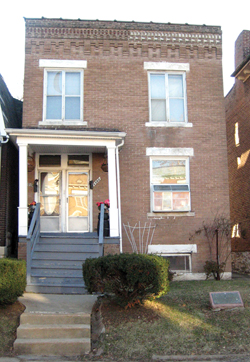May 3, 1948

Photo by Nancy Francis/Wikipedia
In the summer of 1945, J.D. and Ethel Shelley, a black couple who had moved to St. Louis from Starkville, Miss., purchased a home (pictured above) on the city’s north side. Several neighbors, including the Kraemers, sought to block the sale on the grounds that a restrictive covenant barred transfer of the property to anyone of the “Negro or Mongolian race.”
A circuit court held for the Shelleys, but was reversed by the Missouri Supreme Court. By the time the U.S. Supreme Court agreed to review the racial covenants issue, the NAACP had developed a coordinated legal strategy drawn from a series of unsuccessful challenges. Breaking with the past, President Harry Truman authorized the solicitor general to file an amicus brief in support of the petitioners.
In a unanimous 6-0 decision (three justices who presumably held restricted properties did not participate), the court parted with precedent, holding that judicial enforcement of racial covenants violated the 14th Amendment’s equal protection clause. The ruling didn’t end discriminatory housing practices, but it anticipated a string of civil rights victories leading to Brown v. Board of Education.


